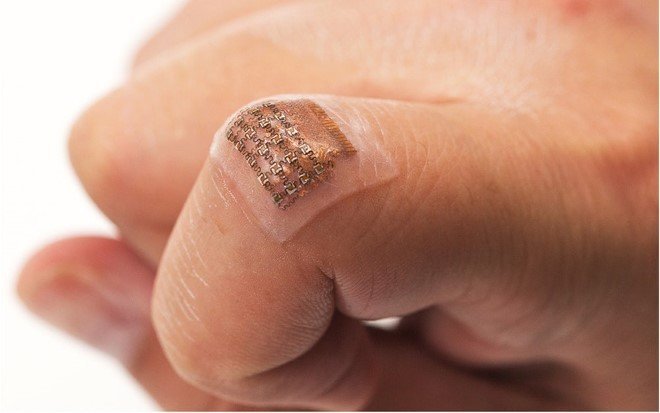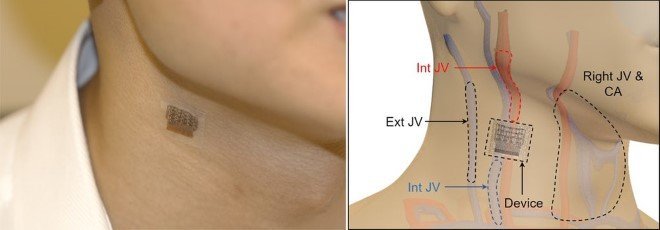Researchers have developed a tiny ultrasound patch to measure blood pressure

In the beginning of 2018 researchers from the University of California, San Diego designed an ultrasound patch that allowed users to observe the interior structure of irregular shaped objects. Recently these scientists have developed another ultrasound patch which is able to measure a person’s blood pressure from deep inside their body.
The blood pressure apparatus with the arm cuff, that is currently being used by doctors all over the world, measures the patient’s peripheral blood pressure. The ultrasound blood pressure patch can measure the central blood pressure of a body, i.e. the pressure in the central blood vessels that carry blood from the heart to other key organs of a human body. The central blood pressure is said to be more accurate than the one mentioned formerly and it is also better at indicating any risks of an imminent heart disease.
The standard way of determining the central blood pressure however is very invasive; it requires a catheter to be inserted into the patient’s blood vessels in the groin, arm or neck and then directing it towards the heart. A non-invasive method is also available; the probe of a tonometer is pressed against the skin right over a major blood vessel and the blood pressure reading is noted down. This does not give very accurate measurements since the readings vary depending on the pressure applied on the patient’s skin, the angle at which the probe is placed and also on the stability, the patient is required to be very still during the procedure.
The new patch helps overcome the drawbacks of the previous techniques. It is made of a thin silicone elastomer sheet which is patterned with electrodes and piezoelectric transducers that are connected via copper coils, this set-up is called an island-bridge structure. It makes the patch flexible allowing it to bend and stretch without being damaged itself.
The patch is connected to a power source and a data processing unit. It generates ultrasound waves that monitor the diameter of the major blood vessel over which the patch is placed and the data processing unit converts this data and gives the user a central blood pressure reading. The blood vessel must not be present at a depth of more than 4 cm below the skin.
The device was human tested. The human volunteer wore the patch on his neck, foot, wrist and forearm, the places where the blood vessel was within range. The readings were obtained for different paces of movement, and the results acquired proved to be more accurate than those obtained by a tonometer and closer to the ones attained via a catheter.
“Wearable devices have so far been limited to sensing signals either on the surface of the skin or right beneath it. But this is like seeing just the tip of the iceberg,” says Prof. Sheng Xu, corresponding author of the study. “By integrating ultrasound technology into wearables, we can start to capture a whole lot of other signals, biological events and activities going on way below the surface in a non-invasive manner.”
The scientists now aim to turn the patch into a standalone device by incorporating a power source, data processor and wireless communication system into the patch. Eventually it will be used to monitor patients’ vitals at every instant, especially those undergoing surgery.
A paper on the research was recently published in the journal Nature Biomedical Engineering.
All Images: Courtesy of Chonghe Wang/Nature Biomedical Engineering
Source: University of California San Diego via New Atlas
